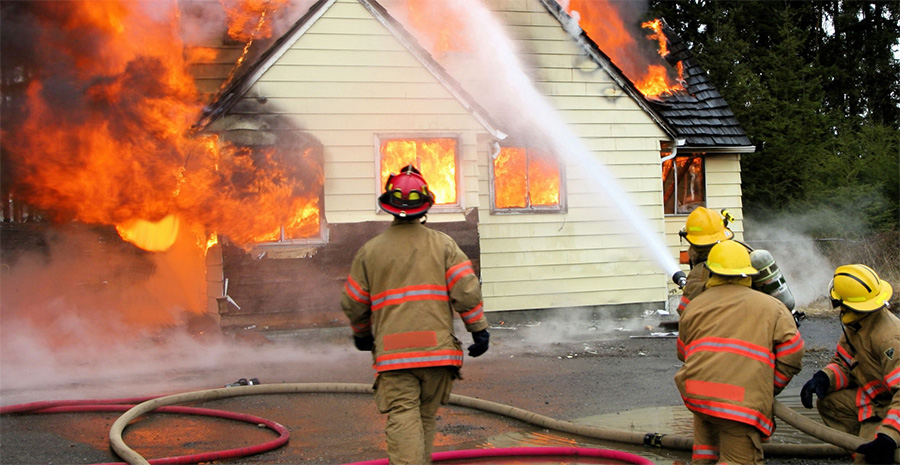Fire Damage Restoration Process: The Dirty Truth No One Warns You About
The flames are gone. The smoke cleared. But your home? Still a disaster zone. The real work—the work that matters—starts when the sirens fade.
Most contractors won’t walk you through what’s next. Not because they can’t. Because they don’t want to. Too messy. Too many steps. Too much liability.
We don’t play that game.
Here’s exactly what goes down in the fire damage restoration process, start to finish, when Total Restoration is on-site. No fluff. No secrets. Just raw, surgical execution.
Because you don’t need just restoration. You need Total Restoration.
What is the first step in the fire damage restoration process?
Step One – Demo, Fast and Precise
First 24 hours? Crucial.
We’re tearing out the soaked drywall. Bagging up blown insulation. Gutting every surface that got hit with fire, smoke, or sprinkler runoff. We don’t patch. We don’t “air it out.” We rip and remove—surgically.
Why? Because every minute that scorched material sits, it spreads damage. Smoke soaks deep into framing. Water invites mold. And suddenly, you’ve got five problems instead of one.
We map the affected zones with thermal imaging. No guesswork. Then we demo fast—without trashing the rest of the property.
How do you dry out after fire damage?
Step Two – Industrial Dry-Out
Fire means water—always. Whether it came from hoses, burst pipes, or your own sprinklers trying to help, the aftermath is a sponge.
That’s where our truck-mounted dehumidifiers, negative air machines, and HEPA-driven air movers come in. We’re not blowing box fans and hoping for the best.
We engineer airflow. We control humidity down to the decimal. We track it with daily moisture mapping, and we don’t move on until your subfloor, studs, and joists are bone dry.
Miss this step? Say hello to black mold six weeks later. Most companies rush it. We don’t.

How do you remove smoke smell after a fire?
Step Three – Deodorization That Actually Works
If you can still smell it, it’s still in your house. Period.
Smoke doesn’t just sit on surfaces—it embeds into them. Into wood grain. Into drywall pores. Into HVAC ducts and attic insulation.
We break it where it lives:
- Thermal fogging to chase smoke into every crack
- Ozone blasting to destroy odor-causing molecules
- Enzyme treatments to dissolve residue at the microbial level
- Ductwork sanitization so your first A/C cycle doesn’t re-smoke your entire home
We don’t mask odor. We neutralize it at the molecular level. Because anything less is lazy. Want to know more about our fire damage restoration process
Because you don’t need just restoration. You need Total Restoration.
What happens after cleanup?
Step Four – Full Rebuild, One Team
This is where most outfits disappear—or pass you off to a third-party GC who’s never seen the damage.
Not us.
Total Restoration handles the rebuild in-house. We restore what was destroyed with exact-match materials, code-compliant framing, and finish work that doesn’t scream “insurance job.”
Your cabinets? Rebuilt. Your drywall? Replaced, textured, painted. Your electrical? Rewired to spec. And we back every fix with a warranty. If we wouldn’t live in it, we don’t sign off.
What does insurance really cover after a fire?
Let’s be blunt: insurance adjusters aren’t always on your side.
They’re trained to minimize payouts. Delay scope approvals. Nickel-and-dime every line item. Meanwhile, your life’s on hold.
We don’t just clean and build. We fight. Our project managers and public adjuster partners speak insurance fluently. We document every cubic foot of damage, line by line, to get you every dollar your policy promises.
We’ve battled every carrier in Ventura County. And we win—because we know the codes, the clauses, and the loopholes.
What can go wrong during fire restoration?
More than you think-and that’s why we’re paranoid about protocol.
Mold bloom. Happens when drying gets skipped or rushed.
Structural shift. Happens when demo crews don’t understand load-bearing framing.
Hidden hazards. Like asbestos-laced insulation or lead paint behind 1950s drywall. We test everything. Others guess.
Smoke reabsorption. Happens when deodorization is surface-level only.
We’ve seen homeowners go through two full restoration cycles because the first crew half-assed it. That doesn’t happen on our watch.
How long does fire damage restoration take?
Real answer? It depends how bad the damage is—and how good your restoration company is at pushing approvals through.
Some jobs take three weeks. Some take three months. But Total Restoration moves faster because we’re not waiting around for red tape.
We handle mitigation, reconstruction, and insurance scope battles in parallel, not in sequence. No dead weeks. No ghost crews.
Because you don’t need just restoration. You need Total Restoration.
Ventura County homes are different. We treat them like it.
We know Ventura County homes. We’ve seen it all.
If you’re hunting for “fire damage restoration near me,” don’t bet your rebuild on a company from three counties over. Total Restoration is already in your neighborhood.
Fire torched your space? Don’t let amateurs turn cleanup into a second disaster.
Call 805-410-4999 – our crew hits your site in 90 minutes. No outsourcing. No waiting. Just Total Restoration.
Share
Lorem ipsum dolor sit amet, consectetur adipiscing elit. Ut elit tellus, luctus nec ullamcorper mattis, pulvinar dapibus leo.
